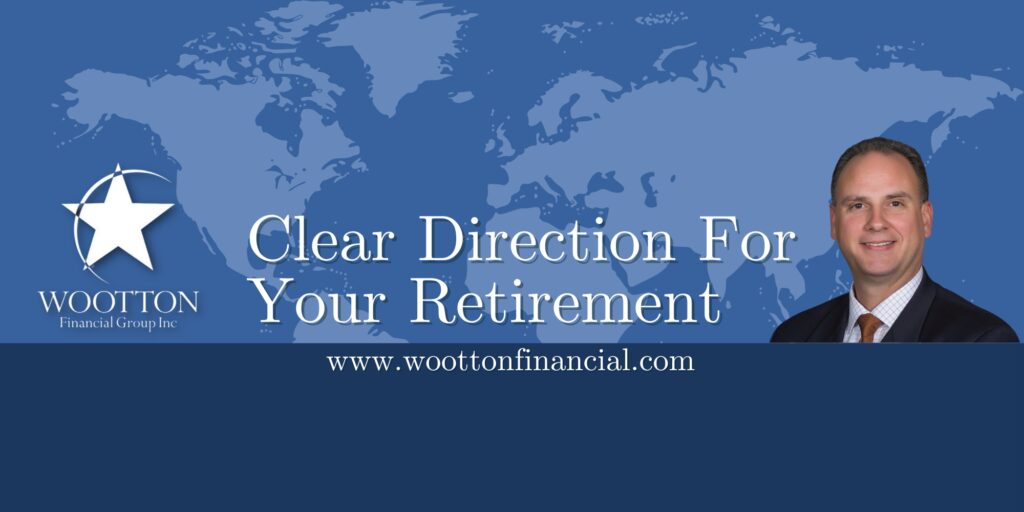Clear Direction for Your Retirement:
The Biggest Retiree Concern
For those of us who were hoping to leave 2021 and its challenges behind us after the first of January, I suppose the universe had other things in mind. 2022 has started with some unique curveballs of its own has it not?Emotions are high to say the least.
That said, many are uncertain and frightened about a great many things especially those surrounding their retirement situation. I’m sure different folks have various areas of con-cern. Many are fearful of the coming election results, inflation, interest rates, the meteoric rise in the market and that a another major correction could be around the corner. Bottom line however, there are always “concerns” and various risks facing retirement here and abroad annually. The question is, what are your concerns and how are you and your financial professional managing those risks in your retirement plan?
So, what’s your primary concern in terms of retirement at this time? I hear a lot of them from folks around the country meeting with us. It’s interesting in that it depends on the person and the situation many times as to what those concerns may be. However, the more folks we meet with the more we find patterns and things that they tend to have in common and con-cerns that tend to rank up at the top of the list.
Interestingly, a study was done by Edward Jones called “The four Pillars of the New Retirement”. In this study, 63% of retirees who were interested in working with an advisor said that they wanted someone who could suggest an investment strategy that helps their retire-ment withstand market volatility.
Also interesting, only 9% of retirees surveyed were interested in optimal timing of taking social security benefits. In fact, this was at the bottom of the list in this particular study. Among retirees who are considering hiring a professional the concerns they listed (as compared to non-retirees) were as follows:
- Advising on an investment strategy for my retirement savings to withstand market volatility: 63%
- Determining how to best draw from investments in retirement: 50%
- Tax implications of retirement: 47%
- Planning for long-term care expenses: 33%
- Picking out an appropriate Medicare plan and Medicare supplements: 13%
- Determining the optimal timing to start taking Social Security: 9%
I found this survey interesting because it coincides with what we see very frequently with those we meet with. It’s not that many of these areas aren’t important, they are very important, but most retirees begin to realize that investing in same old fashion that they’ve been used to for most of their life just isn’t cutting it. When you are nearing or certainly in retirement, things change. Most aren’t willing to wear the same risks (or risk management style) they’ve been wearing for most of their investment life because they don’t have the time to recover the losses that typically can follow.
Investors have been extremely lucky the last few years in terms of history. It is very rare to have such a large bounces in the markets so quickly but especially after a bear market
correction. I’ve written about this and the buy and hold traditional static risk management approach before so I won’t belabor this point here. However, it is worth noting that although no risk management approach is 100% effective at all times, there is more than one approach and you need to be educated about the differences.
It is interesting that our industry in one breath preaches that past performance is no guar-antee of future results and in the next breath tells you to just hold on in riding your losses
(like 2020) cause the markets will recover. That is to say, historically, markets have always tended to go back up. In fairness, they’ve been right, thus far. However, logically, this
is double-speak. Just because something has happened in the past is not a guarantee that the same will happen in the future, right? That’s exactly what they told you in the first breath. However, just take a look to Japan’s markets as a historical marker to the fallacy of this logic that markets always recover to the eternally optimistic upside.
All I’m saying, consider alternatives that attempt to address the primary volatility concerns of retiree investors. Dynamic risk management that doesn’t sit in predefined stock and bond percentages just because and doesn’t remain in predetermined asset allocations just because may be an answer.
It may be that even exiting the market to some degree makes sense from time to time but you’ll never hear that from a buy and hold approach perspective. We’ve found that most of our clients prefer the return of their invest-ment far more than attempting to maximize the return on it.
I hope this is helpful to your retirement journey. Call us, come see us or visit us at www.woot-tonfinancial.com, we’d love the opportunity to discuss your fears and concerns and help provide you Clear Direction for Your Retirement®.
